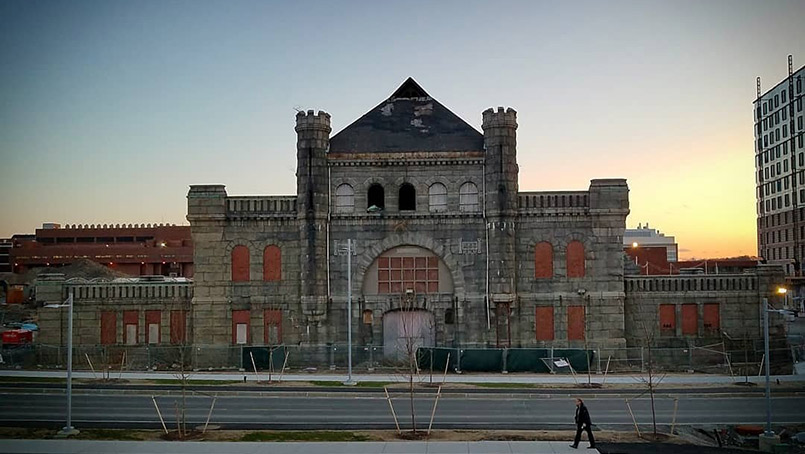
06 Mar 2020 New Atlantic, Utile and HBI Submit Ideas to UMassBoston for Calf Pasture Pumping Station
The team of New Atlantic Development, Historic Boston Inc., and Utile recently submitted a proposal for redevelopment of the historic Calf Pasture Pumping Station on the campus of UMASS Boston in response to the University of Massachusetts Building Authority’s (UMBA) Request for Ideas for a 10-acre mixed use opportunity on the UMASS Boston Campus.
The New Atlantic-Utile-HBI collaboration focuses only on the historic building’s rehabilitation for academic and campus support programs. The team’s ideas represent the long-time interests of each of its three members and their efforts to find a feasible means of preserving and re-activating the historic structure. In many respects, the historic building is the most complicated segment of the 10-acre property. For that reason, the team hopes to bring their solutions for its preservation and re-use of the Calf Pasture site to a development partnership for the larger 10-acre site, and welcomes the opportunity to team-up with an interested and/or selected developer.
Many developers have assessed the Calf Pasture Pumping Station for rehabilitation and re-use, as has the University and the Commonwealth, only to discover that it is a costly venture undertaken by itself. The master development of the surrounding 10-acre site for a mix of commercial and university uses creates an opportunity to tie the creative renewal of the Calf Pasture Pumping Station to the broader financial benefits made possible through new development.

Built in 1883, the Calf Pasture Pumping Station, an adjacent gatehouse, and the related flow control house near the Kennedy Library are the oldest surviving buildings on Columbia Point and the only structures built on original land. Their architecture and history tell the story of 19th century municipal expansion as well as the era’s design sensibilities, technology and innovation. Built as the head house for Boston’s first comprehensively designed sewage system, the Calf Pasture Pumping Station aimed to solve the problem of open sewers that threatened the public health of the growing city. Sewage from a network of pipes throughout the city were directed to the station where it was pumped through massive tunnels beneath Dorchester Bay to holding tanks on nearby Moon Island and then released into the harbor at high tide.
The harbor’s clean-up and changes to sanitation management led to the disuse of the pumping station by the 1980s and, after many years of debate about its future, to its current stasis and distress. Listed individually on the National Register of Historic Places, its preservation-based redevelopment is eligible for Federal and State historic rehabilitation tax credits. The Station also stands at the geographic center of the University’s academic and commercial land holdings and presents a unique place-making opportunity to anchor the University’s considerable new development with an historic building and developmental story of Boston’s waterfront.



